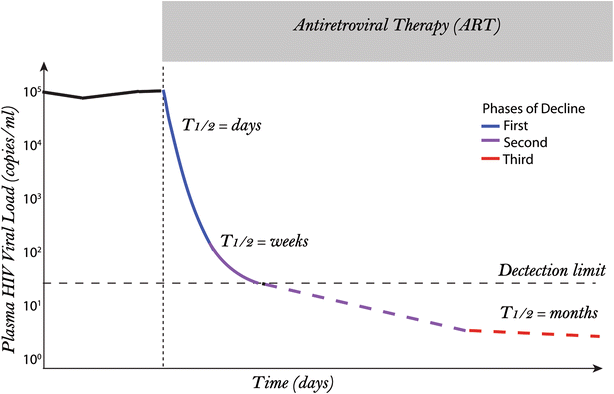Are T cells the only HIV-1 reservoir?
- PMID: 27998285
- PMCID: PMC5175311
- DOI: 10.1186/s12977-016-0323-4
Are T cells the only HIV-1 reservoir?
Erratum in
-
Erratum to: Are T cells the only HIV-1 reservoir?Retrovirology. 2017 Feb 8;14(1):11. doi: 10.1186/s12977-017-0333-x. Retrovirology. 2017. PMID: 28178982 Free PMC article. No abstract available.
Abstract
Current antiretroviral therapies have improved the duration and quality of life of people living with HIV-1. However, viral reservoirs impede complete eradication of the virus. Although there are many strategies to eliminate infectious virus, the most actively pursued are latency reversing agents in conjunction with immune modulation. This strategy, known as "shock and kill", has been tested primarily against the most widely recognized HIV-1 latent reservoir found in resting memory CD4+ T cells. This is in part because of the dearth of conclusive evidence about the existence of non-T cell reservoirs. Studies of non-T cell reservoirs have been difficult to interpret because of technical and biological issues that have hampered a better understanding. This review considers the current knowledge of non-T cell reservoirs, the challenges encountered in a better understanding of these populations, and their implications for HIV-1 cure research.
Keywords: Challenges; Eradication; HIV-1; Non-T cells; Reservoirs.
Figures

References
-
- Henrich TJ, Hanhauser E, Marty FM, Sirignano MN, Keating S, Lee TH, Robles YP, Davis BT, Li JZ, Heisey A, et al. Antiretroviral-free HIV-1 remission and viral rebound after allogeneic stem cell transplantation: report of 2 cases. Ann Intern Med. 2014;161:319–327. doi: 10.7326/M14-1027. - DOI - PMC - PubMed
-
- Finzi D, Blankson J, Siliciano JD, Margolick JB, Chadwick K, Pierson T, Smith K, Lisziewicz J, Lori F, Flexner C, et al. Latent infection of CD4+ T cells provides a mechanism for lifelong persistence of HIV-1, even in patients on effective combination therapy. Nat Med. 1999;5:512–517. doi: 10.1038/8394. - DOI - PubMed
-
- Montaner JS, Lima VD, Harrigan PR, Lourenco L, Yip B, Nosyk B, Wood E, Kerr T, Shannon K, Moore D, et al. Expansion of HAART coverage is associated with sustained decreases in HIV/AIDS morbidity, mortality and HIV transmission: the “HIV Treatment as Prevention” experience in a Canadian setting. PLoS ONE. 2014;9:e87872. doi: 10.1371/journal.pone.0087872. - DOI - PMC - PubMed
Publication types
MeSH terms
Grants and funding
LinkOut - more resources
Full Text Sources
Other Literature Sources
Medical
Research Materials

